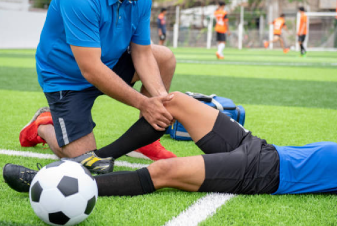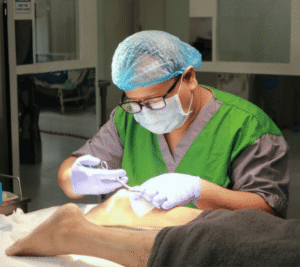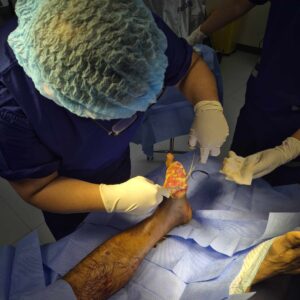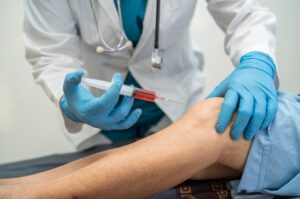Athletes—whether competing at elite levels or enjoying weekend pick-up games—rely on peak physical function to perform their best. Sports physical therapy offers targeted solutions for injury recovery and performance enhancement. Beginning treatment promptly after an injury not only speeds healing but also minimizes the risk of chronic complications. This comprehensive guide explores how sports physical therapy empowers athletes through evidence-based interventions, customized rehabilitation plans, and proactive injury-prevention measures.
What Is Sports Physical Therapy?
Sports physical therapy is a specialized branch of physical therapy focused on treating and preventing injuries related to athletic activities. Unlike general physical therapy, it emphasizes:
Performance Optimization: Working to improve strength, flexibility, and movement patterns specific to an athlete’s sport.
Rapid Recovery: Applying techniques that accelerate tissue healing and restore function quickly.
Preventive Care: Identifying biomechanical imbalances and training errors before they lead to injury.
While a general PT might address everyday mobility challenges, a sports physical therapist understands the demands of sport-specific movements, whether that’s the rotational dynamics of a golfer’s swing or the explosiveness required for a sprinter’s start.
Benefits of Early Intervention
Starting sports physical therapy as soon as possible after an injury offers several key advantages:
Faster Recovery Timelines: Early assessment pinpoints the exact nature and severity of the injury. From there, a therapist can implement targeted techniques—such as manual mobilization or neuromuscular re-education—that reduce inflammation and stimulate tissue repair sooner.
Reduced Risk of Chronic Complications: Delaying treatment allows scar tissue and compensatory movement patterns to develop. These can lead to long-term issues such as joint stiffness, muscle imbalances, or secondary injuries in adjacent regions.
Psychological Confidence: Immediate engagement with a rehabilitation plan fosters an athlete’s confidence, reducing fear of movement and encouraging active participation in recovery.
Case Example: A weekend soccer player who begins therapy within 48 hours of an ankle sprain may return to play in three weeks, whereas delayed care can extend recovery to six or more weeks.
Evidence-Based Treatment Options
Modern sports physical therapy relies on proven techniques to address soft-tissue restrictions, joint dysfunction, and neuromuscular deficits. Common modalities include:
Manual Therapy Techniques
- Joint Mobilization: Hands-on techniques to restore normal joint mechanics and reduce pain.
- Soft-Tissue Release: Myofascial and trigger-point work to alleviate muscle tightness and improve circulation.
Therapeutic Exercise Prescription
- Strengthening Programs: Targeting weakened muscle groups with progressive resistance exercises.
- Flexibility Drills: Dynamic and static stretches to restore optimal range of motion.
Modalities
- Ultrasound Therapy: Promotes deep tissue heating and accelerates healing processes.
- Electrical Stimulation (E-Stim): Enhances muscle activation and reduces pain.
Functional Movement Retraining
- Movement Pattern Correction: Using video analysis or in-person feedback to normalize gait, squat, or jump mechanics.
- Neuromuscular Re-education: Drills that improve proprioception and balance, reducing the likelihood of re-injury.
Customized Rehab Plans
No two injuries—or athletes—are identical. Effective sports physical therapy hinges on individualized rehabilitation plans that consider:
Injury Severity and Health History: A thorough evaluation includes personal medical history, prior injuries, and diagnostic imaging when needed. This informs the pace and intensity of rehab.
Referral Protocols: When red flags appear (e.g., severe swelling, suspected fractures), timely referrals to orthopedic specialists or imaging services ensure safe management.
Goal-Setting
Short-Term Milestones: Regaining basic range of motion, reducing pain, re-establishing muscle activation.
Long-Term Targets: Sport-specific strength benchmarks, return-to-play criteria, and performance enhancement beyond pre-injury levels.
By regularly tracking progress—using objective measures like strength ratios and range-of-motion goniometry—therapists adjust interventions to keep athletes on track.
Injury Prevention Strategies
Preventing injuries before they occur is a cornerstone of sports physical therapy. Key preventive strategies include:
Movement Screening and Biomechanics Analysis
Functional movement screens (FMS) and video gait analysis identify faulty patterns—such as knee valgus during landing—that predispose athletes to injury.
Sport-Specific Conditioning Drills
Designing conditioning routines that mimic the demands of the athlete’s sport:
- Plyometrics for explosive power in basketball and volleyball.
- Rotational Core Work for golfers and tennis players.
Workload Management Education
Teaching athletes and coaches how to balance training volume and intensity reduces overuse injuries. This may involve:
- Monitoring session RPE (Rate of Perceived Exertion).
- Scheduling strategic rest days and cross-training workouts.
Return-to-Play Criteria
Returning too soon can lead to setbacks or repeat injuries. Sports physical therapy employs objective benchmarks to guide safe return-to-play decisions:
Strength and Endurance Ratios: Comparing injured and uninjured limb performance (e.g., hamstring-to-quadriceps strength ratio).
Functional Performance Tests
Single-leg hop tests for lower extremity readiness.
Agility drills for change-of-direction capability.
Psychological Readiness: Addressing fear of re-injury and building confidence through graded exposure (gradually increasing sport-like tasks).
Only athletes who meet or exceed standardized criteria across these domains typically receive clinician clearance to resume full competition.
Choosing the Right Clinic
Selecting a clinic for sports physical therapy involves evaluating several factors:
Clinician Credentials and Experience: Look for therapists with board certification in sports physical therapy (SCS) or fellowship training in orthopedics.
Evidence-Based Approach: Confirm the clinic emphasizes data-driven treatments—using objective outcome measures and up-to-date research.
Facility Amenities: On-site diagnostic tools (e.g., motion-analysis cameras), treatment modalities, and a well-equipped gym area support comprehensive rehab.
Communication and Collaboration: A provider that collaborates with coaches, athletic trainers, and physicians ensures an integrated care plan.
At Osteopractic Physical Therapy of Central Indiana, therapists combine decades of sports-specialty expertise with patient-centered care. From prompt injury assessment to tailored home-exercise programs, their team supports athletes at every stage of recovery.
Takeaway
Comprehensive sports physical therapy bridges the gap between injury and peak performance. By initiating treatment early, adhering to evidence-based protocols, and focusing on individual athlete needs, this specialty not only accelerates healing but also fosters long-term resilience. If you’re ready to reclaim your athletic potential—or prevent the next setback—schedule your sports physical therapy assessment today. Download our free injury-prevention guide or contact Osteopractic Physical Therapy of Central Indiana to begin your journey back to optimal performance.






